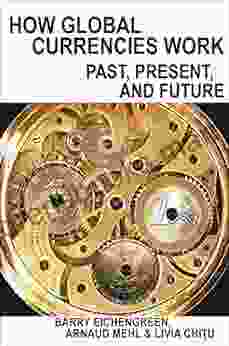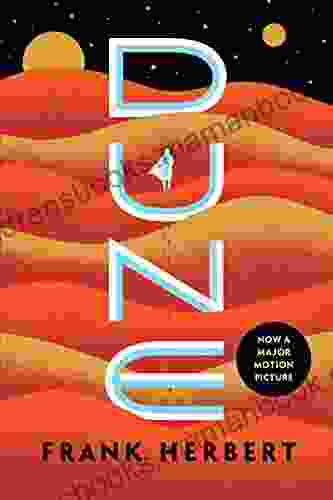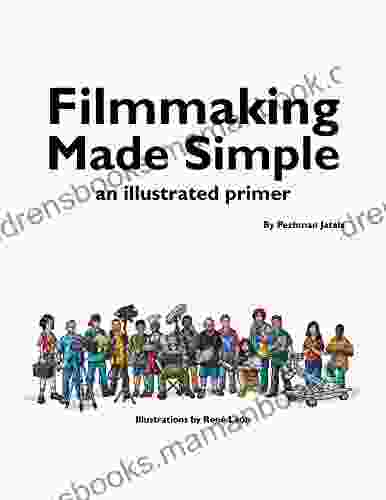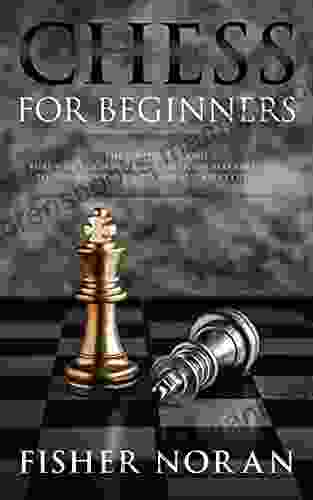Filmmaking Made Simple: An Illustrated Primer for Beginners

Filmmaking doesn't have to be complicated. In fact, it can be a lot of fun! If you're interested in learning how to make your own films, this illustrated primer will teach you everything you need to know to get started.
4.8 out of 5
| Language | : | English |
| File size | : | 71525 KB |
| Print length | : | 177 pages |
| Lending | : | Enabled |
| Screen Reader | : | Supported |
Chapter 1: Choosing the Right Camera
The first step to making a film is choosing the right camera. There are a lot of different cameras on the market, so it's important to do your research and find one that meets your needs.
If you're just starting out, you might want to consider a DSLR or mirrorless camera. These cameras are relatively affordable and easy to use, and they can produce great quality footage.
Once you've chosen a camera, you'll need to decide what kind of lens you want to use. Lenses come in a variety of focal lengths, which determine how wide or narrow your shots will be.
For most filmmaking purposes, a zoom lens is a good option. Zoom lenses allow you to change the focal length of your lens without having to change lenses, which can be very convenient.
Chapter 2: Lighting Your Scene
Lighting is one of the most important aspects of filmmaking. Good lighting can make your footage look professional and polished, while bad lighting can make it look amateurish and sloppy.
There are three main types of lighting: natural light, artificial light, and mixed light.
Natural light is the light that comes from the sun. It's usually the most flattering type of light, but it can be difficult to control.
Artificial light is the light that comes from sources such as lamps, spotlights, and flashlights. It's more controllable than natural light, but it can be more harsh.
Mixed light is a combination of natural and artificial light. It can be a good way to achieve a more balanced look.
Chapter 3: Composing Your Shots
Composition is the way that you arrange the elements of your scene. It's important to compose your shots carefully, as it can have a big impact on the overall look and feel of your film.
There are a few basic principles of composition that you should keep in mind:
- The rule of thirds: This rule states that you should divide your frame into thirds, both horizontally and vertically. The most important elements of your scene should be placed along these lines or at their intersections.
- Leading lines: Leading lines can draw the viewer's eye into your scene and help to create a sense of depth.
- Negative space: Negative space is the empty space around your subject. It can be used to create a sense of balance and contrast.
Chapter 4: Editing Your Footage
Once you've shot your footage, you'll need to edit it together. This is the process of putting your shots together in a way that tells a story.
There are a lot of different editing software programs available, so it's important to find one that meets your needs and budget.
Once you've chosen an editing program, you'll need to learn the basics of editing. This includes things like how to cut and paste footage, add transitions, and add music and sound effects.
Chapter 5: Distributing Your Film
Once you've finished editing your film, you'll need to distribute it. There are a number of different ways to distribute your film, including:
- Online platforms: You can upload your film to online platforms such as YouTube, Vimeo, and Amazon Prime Video.
- Film festivals: You can submit your film to film festivals. If your film is selected, it will be screened at the festival and you may have the opportunity to win awards.
- DVDs and Blu-rays: You can burn your film to DVDs or Blu-rays and sell them online or through physical stores.
Making a film can be a lot of work, but it's also a lot of fun. If you're passionate about storytelling and have a creative vision, then filmmaking is the perfect hobby for you.
This illustrated primer has given you a basic overview of the filmmaking process. For more in-depth information, I recommend checking out some of the following resources:
- Filmmaking.net
- No Film School
- IndieWire
Happy filmmaking!
4.8 out of 5
| Language | : | English |
| File size | : | 71525 KB |
| Print length | : | 177 pages |
| Lending | : | Enabled |
| Screen Reader | : | Supported |
Do you want to contribute by writing guest posts on this blog?
Please contact us and send us a resume of previous articles that you have written.
 Top Book
Top Book Novel
Novel Fiction
Fiction Nonfiction
Nonfiction Literature
Literature Paperback
Paperback Hardcover
Hardcover E-book
E-book Audiobook
Audiobook Bestseller
Bestseller Classic
Classic Mystery
Mystery Thriller
Thriller Romance
Romance Fantasy
Fantasy Science Fiction
Science Fiction Biography
Biography Memoir
Memoir Autobiography
Autobiography Poetry
Poetry Drama
Drama Historical Fiction
Historical Fiction Self-help
Self-help Young Adult
Young Adult Childrens Books
Childrens Books Graphic Novel
Graphic Novel Anthology
Anthology Series
Series Encyclopedia
Encyclopedia Reference
Reference Guidebook
Guidebook Textbook
Textbook Workbook
Workbook Journal
Journal Diary
Diary Manuscript
Manuscript Folio
Folio Pulp Fiction
Pulp Fiction Short Stories
Short Stories Fairy Tales
Fairy Tales Fables
Fables Mythology
Mythology Philosophy
Philosophy Religion
Religion Spirituality
Spirituality Essays
Essays Critique
Critique Commentary
Commentary Glossary
Glossary Bibliography
Bibliography Index
Index Table of Contents
Table of Contents Preface
Preface Introduction
Introduction Foreword
Foreword Afterword
Afterword Appendices
Appendices Annotations
Annotations Footnotes
Footnotes Epilogue
Epilogue Prologue
Prologue Julie Laing
Julie Laing Christina Pirello
Christina Pirello Ethan Kind
Ethan Kind Liam Uicearbhaill
Liam Uicearbhaill Daily Diapers
Daily Diapers David Dubrow
David Dubrow Kahlil Gibran
Kahlil Gibran Maria Grazia Swan
Maria Grazia Swan Southern Soup Jockeys
Southern Soup Jockeys Allan W Eckert
Allan W Eckert Frank Herbert
Frank Herbert Susan Wise Bauer
Susan Wise Bauer John Downey
John Downey Alison Edwards
Alison Edwards Marco Rocha
Marco Rocha Joanna Farrow
Joanna Farrow Amanda Hesser
Amanda Hesser Michael Abbensetts
Michael Abbensetts Shirtaloon
Shirtaloon Dr Loan Dao
Dr Loan Dao
Light bulbAdvertise smarter! Our strategic ad space ensures maximum exposure. Reserve your spot today!

 Frank ButlerUnveiling the Tragic Movements in Schubert's String Quartet No. 14 "Death and...
Frank ButlerUnveiling the Tragic Movements in Schubert's String Quartet No. 14 "Death and... Colby CoxFollow ·18.9k
Colby CoxFollow ·18.9k Nathaniel PowellFollow ·11.6k
Nathaniel PowellFollow ·11.6k Jace MitchellFollow ·4.3k
Jace MitchellFollow ·4.3k Leslie CarterFollow ·10.1k
Leslie CarterFollow ·10.1k Roland HayesFollow ·9.4k
Roland HayesFollow ·9.4k Christopher WoodsFollow ·8.1k
Christopher WoodsFollow ·8.1k Oliver FosterFollow ·7.7k
Oliver FosterFollow ·7.7k Tyrone PowellFollow ·13.3k
Tyrone PowellFollow ·13.3k

 Tom Clancy
Tom ClancyReading Wellness: Lessons in Independence and Proficiency
Reading is a fundamental skill that can...

 Brody Powell
Brody PowellHow Global Currencies Work: A Comprehensive Guide to...
Overview of...

 Dwight Bell
Dwight BellDune by Frank Herbert: An Epic Space Opera That Explores...
Dune by Frank...

 Ronald Simmons
Ronald SimmonsAn Anthology of Early Plays (1858-1938): A Journey into...
: Uncovering...

 Dominic Simmons
Dominic SimmonsCulture in the Ancient World: A Comprehensive Exploration...
Culture is a complex and multifaceted concept...
4.8 out of 5
| Language | : | English |
| File size | : | 71525 KB |
| Print length | : | 177 pages |
| Lending | : | Enabled |
| Screen Reader | : | Supported |












